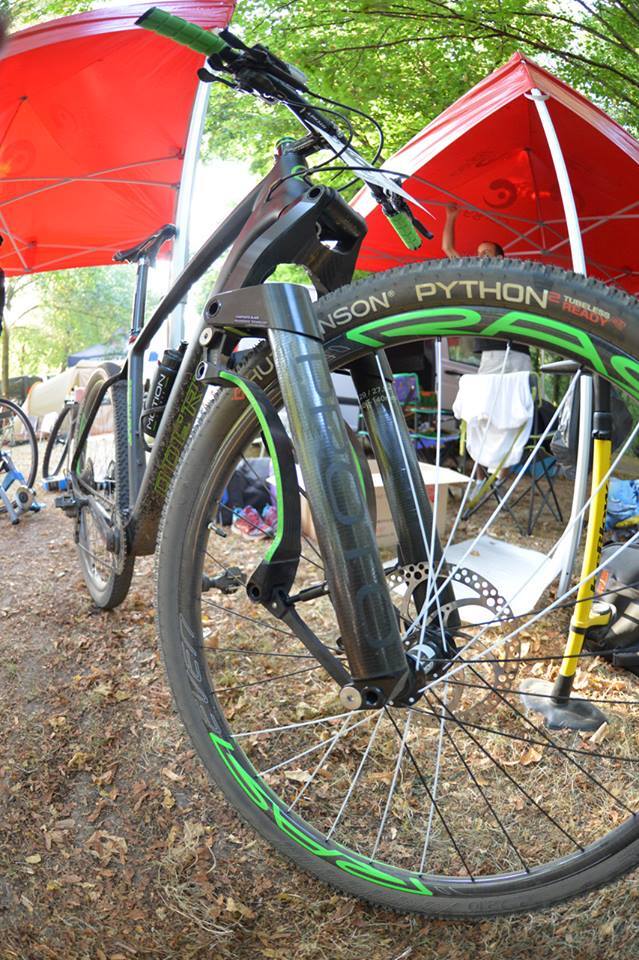As long as there have been mountain bikes, there have been people experimenting with linkage-style suspension forks. Unlike traditional telescoping forks, they have a hinged design which allows them to absorb impacts by "folding" up and down. France's Motion Engineering is now taking a modern crack at the technology, with its brake-dive-eliminating Motion France Dynamic fork.
Unlike some earlier efforts in the field, the Motion fork doesn't incorporate an elastomer, air or coil-spring shock absorber. Instead, it has a set of carbon composite leaf springs (green-edged things in photo below) extending from the linkage down the backs of the fork legs. These springs are available in different stiffnesses, and can be swapped in and out depending on rider weight and the amount of travel desired.
An adjustable oil damper in the head tube takes care of rebound, and allows users to lock out the fork when suspension isn't needed.

The design is claimed to be maintenance-free, more sensitive than a regular telescoping fork, and – as mentioned – immune to brake dive. In other words, when the front brake is applied while at speed, the fork won't compress. This helps keep the rider's center of weight from being pitched forward, and also allows the fork to retain its full length of travel when stopping.
Motion Engineering has previously displayed prototypes at trade shows, and has now turned to Kickstarter to finance production of the new Trail version of its Motion fork. The Trail is in turn being offered in two setups – one made to fit 29-inch/27.5+ wheels, and the other for straight-up 27.5-inchers. The two setups offer 110-150 and 120-160 mm of travel respectively, and tip the scales at a claimed 1,850 grams (4 lb).
If you're interested in getting one, you can do so for a pledge of €1,250 (about US$1,381), which is 50 percent the planned retail price. Assuming it reaches production, delivery is estimated for next July.
You can see a group of test riders trying out the fork, in the following video.
Sources: Motion France, Kickstarter





